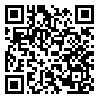جلد 9، شماره 1 - ( 11-1398 )
جلد 9 شماره 1 صفحات 37-31 |
برگشت به فهرست نسخه ها
چکیده: (873 مشاهده)
Introduction: A few studies have investigated the effect of saliva contamination of cured or uncured adhesive systems. The aim of this study was to evaluate the effect of salivary contamination and different decontamination methods on microleakage of composite restorations.
Materials and Methods: Class V cavities (2 mm wide, 1.5 mm deep, and 4 mm long) were prepared on buccal and lingual surfaces of 135 extracted human premolars. The specimens were randomly divided into 9 groups, 30 cavities in each. The materials used consisted of single bond (3M) and Z250 (3M). Except group 1 (Control), in Groups 2-5, uncured adhesive, and in groups 6-9 cured adhesive was contaminated with saliva (30 s). Decontaminating procedures were: blot-drying, rebonding (Groups 3 and 6), rinsing, air-drying, rebonding (Groups 4 and 7), rinsing, blot-drying, rebonding (Groups 8 and5). In groups 2and 9 no decontamination procedure was done. After restoring the cavities, thermo-cycling and dye penetration, they were sectioned buccolingually and analyzed by stereomicroscope. Data were analyzed by Kruskal-Wallis and Dunn tests (P<0.05).
Results: In occlusal margins; there were no significant differences in the microleakage between groups 3,4,5 with group 1(P>0.05) but in gingival margin, there were significant differences in the microleakage between all of the groups with group1(P= 0.0001).
Conclusion:None of the methods in this study could reduce the micro leakage in the cavities with both enamel and dentin margins.
Materials and Methods: Class V cavities (2 mm wide, 1.5 mm deep, and 4 mm long) were prepared on buccal and lingual surfaces of 135 extracted human premolars. The specimens were randomly divided into 9 groups, 30 cavities in each. The materials used consisted of single bond (3M) and Z250 (3M). Except group 1 (Control), in Groups 2-5, uncured adhesive, and in groups 6-9 cured adhesive was contaminated with saliva (30 s). Decontaminating procedures were: blot-drying, rebonding (Groups 3 and 6), rinsing, air-drying, rebonding (Groups 4 and 7), rinsing, blot-drying, rebonding (Groups 8 and5). In groups 2and 9 no decontamination procedure was done. After restoring the cavities, thermo-cycling and dye penetration, they were sectioned buccolingually and analyzed by stereomicroscope. Data were analyzed by Kruskal-Wallis and Dunn tests (P<0.05).
Results: In occlusal margins; there were no significant differences in the microleakage between groups 3,4,5 with group 1(P>0.05) but in gingival margin, there were significant differences in the microleakage between all of the groups with group1(P= 0.0001).
Conclusion:None of the methods in this study could reduce the micro leakage in the cavities with both enamel and dentin margins.
نوع مطالعه: Review article |
موضوع مقاله:
عمومى
دریافت: 1398/10/30 | پذیرش: 1399/1/9 | انتشار: 1399/1/9
دریافت: 1398/10/30 | پذیرش: 1399/1/9 | انتشار: 1399/1/9
| بازنشر اطلاعات | |
 | این مقاله تحت شرایط Creative Commons Attribution-NonCommercial 4.0 International License قابل بازنشر است. |

